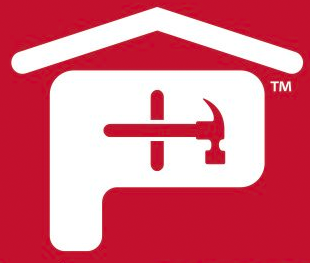

How to Take Care of Your Roofing System
Ahh, spring — a time when flowers bloom, birds chirp and cooped-up homeowners start itching to tackle outdoor projects. But with so many things to do around the house after a long winter, it’s tough to decide which project comes first. Atlas Roofing suggests looking up.
After months of arctic temperatures, freezing rain, and sleet and snow, many residential roofs need a good once-over and possibly some typical maintenance — or more. While there’s no substitute for a roof inspection from a professional contractor, homeowners can get the ball rolling from the ground by looking for the following:
Damaged or missing shingles
During strong storms, shingles can become dislodged or worn out. While standing on the ground, use binoculars to thoroughly inspect for problematic shingles and report them to a roofing contractor.
Sagging gutters
Gutters that are choked with leaves and debris can appear to be sagging. They should be cleaned and checked for leaks. Downspouts should be facing away from the foundation to prevent damage.
Interior leaks
Stains on a ceiling or attic beams are evidence of a roof leak that needs attention. An interior leak is a good predictor for mold, mildew and rot.
In addition, homeowners should inspect for damages from ice dams, including water intrusion, wet attic insulation, warped sheetrock walls and peeling interior paint.
Ice dams form when indoor heat rises in poorly ventilated attics. When rooftop ice and snow melts, it drips and refreezes on cold eaves and gutters. The best way to combat ice dams is through balanced ventilation, which keeps air moving and the attic at a steady temperature.
Atlas Roofing offers a wide selection of ventilation options that enhance any rooftop:
- Ridge vents provide protection from driving rain, wind, snow, dust and insects while allowing for complete attic ventilation.
- Slant back/box vents are a more discrete and economical way to ventilate an attic. Atlas offers paintable static and ridge vents to complement any roof.
- Power vents come with a prewired humidistat and thermostat for larger attics where more air circulation is required.
- Rolled vents allow for quick installation along the roof ridge, like the classic ridge vent.
Ultimately, if a professional contractor determines the roof needs to be replaced, an Atlas Signature Select® Roofing System covers all the bases.
A roofing system is made up of several components designed to work together to ensure optimal roof performance and protection:
Underlayment, such as Atlas Summit® 60 and Summit® 180 or WeatherMaster® Ice & Water, is installed over the roof deck and under shingles, providing a barrier against potential leaks.
Starter shingles, such as Atlas Pro-Cut® HP42® starter shingles, protect the roof edge and provide features needed for high wind resistance at the critical roof areas of the eaves and rakes.
Roof shingles, such as Atlas Roofing’s popular Pinnacle® Pristine and highly rated StormMaster® Shake lines, are the main and most recognized components of a roof. Not only are they the first layer of defense against the elements, but they also provide aesthetically pleasing curb appeal.
Ventilation, such as Atlas TruRidge® and HighPoint™ products (described above), regulates the temperature in the attic, thereby helping to prevent many potentially damaging issues below the roof.
Hip & Ridge shingles, such as the Atlas Pro-Cut® and StormMaster® lines, cap external roof angles, giving the roof a polished, finished look.
A new roof is a big investment, but because the Atlas Signature Select® Roofing System is backed by one of the best warranties in the industry, it offers homeowners something priceless — peace of mind.
For more information about Atlas Roofing products, visit atlasroofing.com.






 PRO LOGIN
PRO LOGIN